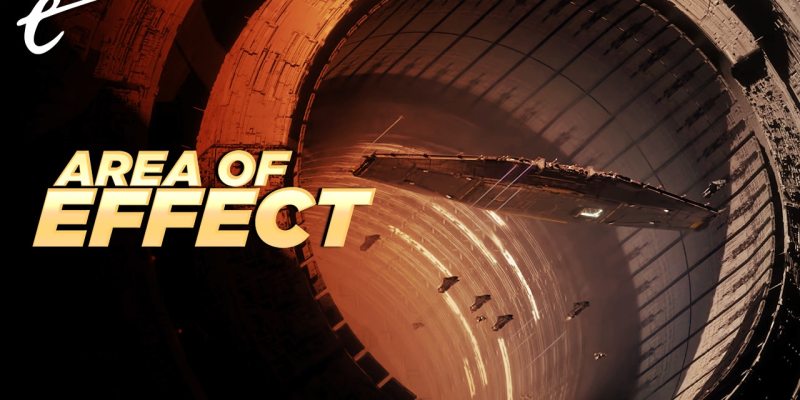I don’t envy whoever’s writing the story of Homeworld 3. After Homeworld, Homeworld: Cataclysm (re-released as Emergence), and Homeworld 2, they’ve got to come up with a fourth way for the Hiigarans to be exiled to the stars. But I’m more than happy for them to recycle chunks of plot as long as Homeworld 3 has the same big Battlestar Galactica energy as its predecessors.
When I first got into Homeworld, I was blissfully unaware that this space-based RTS had been influenced by the original pre-reboot Battlestar Galactica. But the more I played, the more I saw the parallels, and when the 2004 Galactica reboot came along, I started ploughing hour after hour into Homeworld 2.
Because as impressive as they were at the time, it wasn’t the ships or the space battles that made Battlestar Galactica (either the original or the reboot) appeal to me. Instead, it’s the sense of loneliness and desperation that pervades both shows.
When the Twelve Colonies are annihilated, mankind is forced to take to the stars, with the Cylons nipping at their heels. Sure, both shows have their stars, but there’s no Luke Skywalker, no Force, no Yavin IV, nothing other than the vague scrap of a prophecy. Star Wars’ rebels can, at least, lay down their arms and hide amongst the subjugated populace. Battlestar Galactica’s fugitives, on the other hand, have nowhere to go, and staying still is a death sentence.
It’s this hopelessness that pervades the Homeworld games and gives them an entirely different energy to most other RTSes. Homeworld sees the Hiigarans’ home planet razed, leaving only 600,000 Hiigarans alive. That’s it. That’s the entirety of the Hiigaran species, and you’re the one tasked with keeping them breathing. No pressure.
Most missions begin with your mothership hyperspacing into another barren sector. The few seconds it takes to hyperspace in can feel like minutes as you gaze at this massive metal ark, the one thing preventing your species from being a memory.
Then the resource-gathering begins. You don’t have the luxury of mining glowing green minerals or cracking open whole planets. Homeworld wants to remind you of your lowly status, so it has you gathering up gas and debris, like some starving puppy hunting for scraps. Remember that episode of Battlestar Galactica where Cylon agents all but destroyed the fleet’s water supply? That’s how fragile your situation is.
And like Battlestar Galactica, Homeworld never lets up. Your foes are right behind you or, in some cases, one step ahead of you. Even if the system you’re jumping into isn’t swarming with enemy ships, they’ll be along shortly. As vast as space is, Homeworld’s levels are anxiety-inducing because, again, there’s really nowhere to hide. Enemies could hyperspace in at any moment, bringing with them an unknown number of ships.

Battlestar Galactica avoided stating just how large the Cylon fleet was, and the Homeworld games do the same. There’s no fleet size that guarantees you can’t be annihilated by your foes. Still, you can always build new ships in Homeworld, right? That’s got to count for something, right?
That’s true, but like in a lot of RTSes, you don’t get a clean slate at the beginning of each mission. Every ship that’s destroyed is a vessel that won’t be around at the beginning of the next level, so choosing whether or not to commit a ship to a battle can be agonizing. And “winning” doesn’t necessarily mean beating the enemy to a man; like the Galactica, you’re surviving from jump to jump. Just keeping the enemy busy till the mothership is ready to jump is a trial.
The original Homeworld does have one glaring flaw, which is that, if you beat a level, you can hoover up any remaining resources. Those hurried jumps create a real sense of momentum, but being able to hang around at leisure undermines it to no end. Thankfully, Homeworld 2 stepped up and forced you to hyperspace to the next level. Normally, I’d be grumbling at being told when I’m done, but it’s a mechanic that exists to bolster the game’s atmosphere.

There are mods for Homeworld 1 and 2 that outright inject Battlestar Galactica’s fighters and capital ships into the game, but they’re all but unnecessary. Would having Edwards James Olmos provide a voice-over elevate the Homeworld series? Maybe a little, but what really makes it a Battlestar Galactica game in all but name is the way it has you on the ropes.
Along those lines, the only time when you really feel safe in Homeworld 2 is when you beat the final mission. The relief of all that tension (insert your own mucky joke here) is the supreme payoff.
It’s been 18 years since Homeworld 2 was released, and the good news is that some ex-members of Relic, the team behind the series, are working on Homeworld 3 as Blackbird Interactive. So I have high hopes that they’ll deliver, that every victory will need to be snatched from the jaws of defeat. Meanwhile, there has been an official Battlestar Galactica strategy game since then, but Battlestar Galactica Deadlock’s pricing model is more than a little off-putting.
I want the survival of an entire people to be on my shoulders, to the point that I have a finite number of people to employ throughout the entire campaign. I want to be unsure whether to mourn the deaths of my pilots or curse the fact that their demise has made the game a little harder. Above all, I want Homeworld 3 to deliver the Battlestar Galactica-style experience that made previous entries such an exhilarating and fulfilling journey into desperation.
